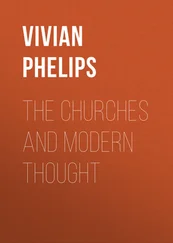Sophia Beale - The Churches of Paris, from Clovis to Charles X
Здесь есть возможность читать онлайн «Sophia Beale - The Churches of Paris, from Clovis to Charles X» — ознакомительный отрывок электронной книги совершенно бесплатно, а после прочтения отрывка купить полную версию. В некоторых случаях можно слушать аудио, скачать через торрент в формате fb2 и присутствует краткое содержание. Жанр: foreign_antique, foreign_prose, на английском языке. Описание произведения, (предисловие) а так же отзывы посетителей доступны на портале библиотеки ЛибКат.
- Название:The Churches of Paris, from Clovis to Charles X
- Автор:
- Жанр:
- Год:неизвестен
- ISBN:нет данных
- Рейтинг книги:3 / 5. Голосов: 1
-
Избранное:Добавить в избранное
- Отзывы:
-
Ваша оценка:
- 60
- 1
- 2
- 3
- 4
- 5
The Churches of Paris, from Clovis to Charles X: краткое содержание, описание и аннотация
Предлагаем к чтению аннотацию, описание, краткое содержание или предисловие (зависит от того, что написал сам автор книги «The Churches of Paris, from Clovis to Charles X»). Если вы не нашли необходимую информацию о книге — напишите в комментариях, мы постараемся отыскать её.
The Churches of Paris, from Clovis to Charles X — читать онлайн ознакомительный отрывок
Ниже представлен текст книги, разбитый по страницам. Система сохранения места последней прочитанной страницы, позволяет с удобством читать онлайн бесплатно книгу «The Churches of Paris, from Clovis to Charles X», без необходимости каждый раз заново искать на чём Вы остановились. Поставьте закладку, и сможете в любой момент перейти на страницу, на которой закончили чтение.
Интервал:
Закладка:
S. Sophia Beale
The Churches of Paris, from Clovis to Charles X
"La nef vagant dessus la mer galicque
Porte dedens soy richesse inestimable
Justice y est pour patron magnificque
Raison y sert de Lieutenant notable,
Gens de scauoir par œuure treslouable
Sont galliotz qui lamenent a port,
Marchans y ont tresasseure support.
Prebstres, Bourgeois, nobles, Clercz et gen-darmes.
Icelle nef de se'fertile apport,
Cest de Paris le beau blazon des armes."
PREFACE
IN a book of this kind, it is difficult to prevent oneself becoming a guide, more or less complete. Dates and facts, architectural details and descriptions, all savour of the handbook; but having determined to keep to the historical and archaeological, rather than the architectural side of the churches, I have tried to rake up quaint and legendary lore, and so add to the interest of an ordinary guide book. I would also pray my readers to bear in mind that, as the work is not intended to be an architectural treatise, I have simply walked in the paths of Viollet-le-Duc and Guilhermy, whenever I have been compelled to describe the technical details of the churches.
My thanks are due to the Editor of the American Architect , for his courtesy in allowing me to build these ecclesiastical monographs upon the foundation of some articles which have appeared from time to time in a condensed form in the Boston (U. S. A.) paper; and also to the Editor of the Magazine of Art , for a similar kindness.
I should also like to acknowledge my indebtedness to the following authors and their works:
"Histoire de la Sainte-Chapelle." Morand.
"Histoire de Saint-Denis." Dom Millet.
"Histoire de Saint-Eustache." L'abbé Koenig.
"Inscriptions du Diocèse de Paris." F. de Guilhermy.
"Itinéraire Archéologique de Paris." F. de Guilhermy.
"l'Église Saint Julien-le-Pauvre." A. Le Brun.
"Monographie de l'Église Royale de Saint-Denis." F. de Guilhermy.
"Sacred and Legendary Art." Anna Jameson.
"The Early British Church." J. Yeowell.
SAINT-ANTOINE DES QUINZE-VINGTS
Saint Louis, always careful in helping his suffering subjects, founded this hospital for the blind in 1260, upon a piece of ground abutting on the Louvre, now traversed by the Rue de Rivoli. In 1780 the hospital was transferred to the Faubourg Saint-Antoine, and took up its abode in the old dwelling place of the Black Musketeers, whose chapel also served as a parish church. It is a little building of no beauty nor interest, although a few inscriptions relating to pious foundations still remain in the chapel, the oldest being dated 1481. One of these tells us of the institution, in 1667, of a somewhat early Mass by one Marie Lambert, maid to the queen mother. It was to be said at 4 a.m. in order that the poor blind people should be able to sally forth a-begging ( d'aller à la quête ) fortified with the Bread of Life.
LES CARMES DÉCHAUSSÉES
The old church of the barefooted Carmelites in the Rue de Vaugirard was commenced in 1613, and dedicated to S. Joseph in 1625. It is now served by the Dominicans. The crypt is the only interesting part of the church, and is a curiosity, as it contains innumerable bones piled up on every side, the remains of the ghastly September massacres of 1792. The frescoes painted by a Liège artist, Bartholet Flamaël, are very much esteemed. Some of the chapels are richly decorated in the gaudy style of the 17th century. The altar is embellished by a 14th century bas-relief in marble representing the Last Supper. A few epitaphs still remain: that of Cardinal de Beausset, the historian of Fénelon and Bossuet; one of Cardinal de la Luzerne; and a marble, covering the heart of Archbishop Affre, who was shot on a barricade in 1848, while endeavouring to make peace with the insurgents.
LA SAINTE-CHAPELLE
The origin and foundation of this most lovely example of mediæval art is so much a part of S. Louis' life that it may not be out of place to give some account of the Saint's character and habits before proceeding to describe the history of the chapel.
Louis IX. was pious and practical, and inconvenienced his courtiers as much by his punctuality and the assiduity with which he conducted his business, as by his religious duties. These he considered a part of his daily work, hearing all the canonical offices with the same regularity as he attended to the grievances of his subjects. Often, like our own George Herbert, was he found prostrate before the altar wrapped in prayer. Even Gibbon allowed that he united the virtues of a king, a hero, and a man – he might have added those of a just judge and a lawgiver; and Voltaire sums up his character as follows: "Il n'est guère donné à l'homme de pousser la vertu plus loin." When his more worldly friends cavilled at his austerities, he made his case good by retorting: "Si je passais deux fois autant de temps à jouer, ou à courir les bois, pour m'occuper de la chasse, personne n'en parleroit." As in the case of nearly all exceptionally good men, he probably owed everything to the extreme care that his mother had bestowed upon his education – a care which he repaid by a life-long devotion to her memory. Of good Queen Blanche's character we get a glimpse in the following touching anecdote. It is related that one day at Court, the Queen noticed a beautiful youth with long, fair hair, and asking his name, was answered, "Prince Herman, the son of the sainted Elizabeth of Hungary." On hearing this, Queen Blanche rose from her seat, and, gazing at the boy, said to him, "Fair youth, thou hadst a blessed mother; where did she kiss thee?" Whereat Herman, blushing, placed his finger on his forehead between his eyes, and the Queen, reverently pressing her lips upon the spot, looked up to Heaven and breathed the invocation: Sancta Elisabetha, Patrona nostra dulcissima, ora pro nobis. That a mother so imbued with admiration for the sainted Elizabeth should have a son who walked in the Hungarian queen's steps, is not very remarkable in those ages of faith. S. Louis' faith was simple, loving, and inextinguishable; and so it came about that when he heard of the Emperor Baldwin II.'s financial difficulties, he decided to purchase the relics which had been given more than once, it is said, as pledges for temporary loans. The Emperor's letter upon the subject would lead one to suppose that it was an act of generosity to faire passer the relics to S. Louis; but we know that the King paid very handsomely for them. "Je désire," said the emperor, "ardemment de vous faire passer cette précieuse relique à vous, mon cousin, mon seigneur, et mon bienfaiteur, et au royaume de France ma patrie." Other purchasers seem to have been in the field; for S. Louis only obtained, at that time, the Crown of Thorns and some portion of the True Cross. One of his rivals was our Henry III., who in 1247 summoned all his nobles to London to witness the reception of some of the Holy Blood which had been brought from the East in a crystal vase, by one of the Knights Templars. It was sent by the Master of the Templars and Hospitallers, its genuineness being attested by the Patriarch of Jerusalem and the abbots of the Holy Land. On the 13th October, being the feast of S. Edward the Confessor, the King, after prayer and fasting, carried the reliquary from S. Paul's to Westminster, where it was deposited in the Abbey church. The Bishop of Norwich preached, and celebrated mass; and in his sermon took pains to impress upon his hearers that the Holy Blood was more precious even than the True Cross possessed by the King of France – an argument which points to one of the causes of rivalry between the nations during the Middle Ages.
Читать дальшеИнтервал:
Закладка:
Похожие книги на «The Churches of Paris, from Clovis to Charles X»
Представляем Вашему вниманию похожие книги на «The Churches of Paris, from Clovis to Charles X» списком для выбора. Мы отобрали схожую по названию и смыслу литературу в надежде предоставить читателям больше вариантов отыскать новые, интересные, ещё непрочитанные произведения.
Обсуждение, отзывы о книге «The Churches of Paris, from Clovis to Charles X» и просто собственные мнения читателей. Оставьте ваши комментарии, напишите, что Вы думаете о произведении, его смысле или главных героях. Укажите что конкретно понравилось, а что нет, и почему Вы так считаете.




![Theresa Cheung - The Dream Dictionary from A to Z [Revised edition] - The Ultimate A–Z to Interpret the Secrets of Your Dreams](/books/692092/theresa-cheung-the-dream-dictionary-from-a-to-z-r-thumb.webp)







